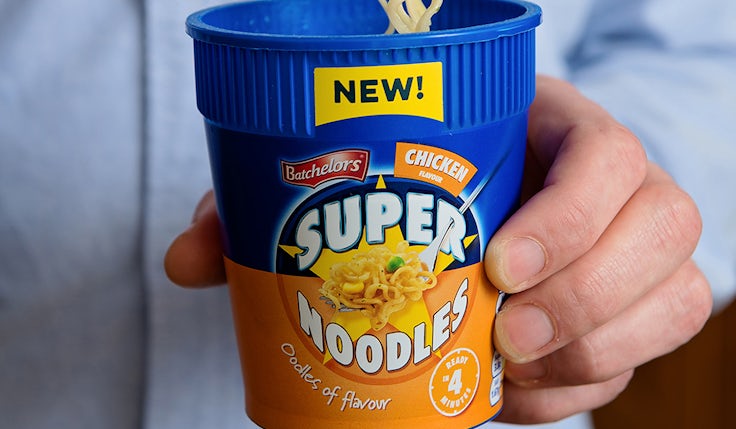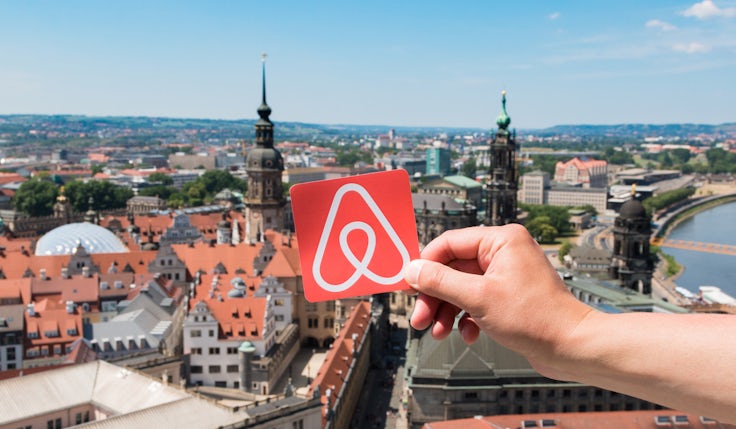Amazon must resist the temptation to bleed James Bond dry
The 007 brand will suffer if Amazon emulates Star Wars with spin-off movies and series. But it can license endless products if they’re far away from screens.

The name is Bond. Uncertain Bond. The news that Amazon has taken complete creative control of Ian Fleming’s James Bond franchise has been met with widespread concern. Can the global digital behemoth really manage the future direction of one of the greatest characters in modern fiction?
The initial transition from book to screen was masterfully handled by Albert ‘Cubby’ Broccoli. In 1961, Broccoli joined forces with fellow producer Harry Saltzman and a year later Dr No, starring Sean Connery and helmed by director Terence Young, was released to great acclaim.
It’s one thing to make a single successful movie, quite another to build a franchise of 25 films with a combined gross of over £6bn (£16bn, adjusted for inflation) across a seven-decade span. With only the occasional misstep – invisible cars, Pussy Galore, all 131 minutes of Octopussy – Broccoli and then his heirs, Barbara Broccoli and Michael Wilson, were consistently commercially successful. They also managed to stay true to the source work while navigating 60 years of constant cultural change.
And running through everything was good old-fashioned British taste. From the original moulding of Sean Connery from Scottish body builder into a gentleman of austere class, through the recruitment of the mighty composer John Barry and the astonishing Shirley Bassey, to the final triumph of Daniel Craig’s bond, it’s all been so very well done. The right people, at the right time, doing it the right way.
Last night at the Oscars, the Academy celebrated Bond not because of a new movie or a specific anniversary but simply because Broccoli and Wilson were standing down. Their impact on movie making and the box office has been that great and their legacy of excellence so impressive. Nobody has done it better.
So, when Jeff Bezos sent out his crass question on X last month asking anyone and everyone who they would pick as the next Bond, there was a collective shudder. Amazon has not exactly excelled at making films thus far. It has spent big on titles like Air, Late Night and Sound of Metal without ever producing anything of real note commercially.
And, when its studio has picked up existing iconic IP like Tolkien’s Lord of the Rings, the results have also been big-budget, low-impact fare. Despite its billion-dollar budget, the Rings of Power extension of the Tolkien fable has been savaged by both critics and fans of the original trilogy alike.
Everything looks decidedly dodgy for Bond, now that Amazon not only has control of the movie releases through its acquisition of MGM but also has creative control thanks to a rumoured billion-dollar deal with Broccoli and Wilson. From ex-Bond Timothy Dalton, who was “kind of sad” at the news, to legendary casting agent Debbie McWilliams, who picked most of the actors over the last dozen Bond films and was “not filled with any great enthusiasm”, no one aside from Amazon executives appears especially excited at the prospect.
So, will Bezos prove to be the bald-headed baddy that finally finishes off Bond, not with a sinister giant laser but a poorly managed diversification strategy that gradually destroys 50 years of consistent brand execution?
Ritson: Want a brand fit for the future? Understand its past
Brand extensions vs line extensions
To avoid corporate humiliation, Amazon will need to understand brand equity, brand extension and the slightly paradoxical nature of what happens when you diversify an existing brand into new territory. Let me start with a story.
A long time ago, I worked with a very good American marketing team who were responsible for an iconic engineering brand. It was a lubricant, and the team was keen to capitalise on its brand strength among nerds and engineers with product diversification. They picked work gear. Proper stuff. You know, boots and overalls. Very well made. And emblazoned with the famed brand. Made under license by a carefully picked agent, the best bit was that there were no in-house capability or capacity issues. It was a license to print money.
Then the CEO got wind of it. He hated the stretch and saw the venture as too risky. He wanted something closer to home and the company’s existing competences. In the end he had his way, and the brand diversified into an adjacent lubricant sub-category instead. This was deemed safer and a more likely win.
Except it wasn’t. The weakness of the new product dented the pristine reputation of the core brand. And, just as bad, the team spent a precious 18 months working on the in-house launch at the expense of their main product. Three years later, the project was abandoned.
[With line extensions,] the likelihood of success is greater. But, crucially, so is the risk of hurting brand perceptions.
The lesson is the difference between a brand extension and a line extension. With brand extensions, a company takes its existing awareness and associations and leaps into a totally new category. The best leaps enable a brand to jump straight into a new market, with weak competitors and an existing headwind derived from strong pre-existing brand equity. A razor blade company like Gillette can make millions from moisturising cream. A micro-computing firm like Apple can make billions from phones. And an artisan trunk manufacturer from Paris can diversify into handbags, fashion and luxury jewellery.
Line extensions, however, are very different. In this less radical act of diversification, a company creates new products but within the category it already inhabits. Coke makes billions from a diet version of its best-selling soda. Porsche makes an electronic car to match those with petrol drive trains. An ex-academic launches a MiniMBA in Brand Management to sit alongside his already successful Marketing course.
In these instances, the likelihood of success is greater. But, crucially, so is the risk of hurting brand perceptions if that new product is poor or not consistent with the existing brand associations. If Porsche makes a watch that looks like crap and keeps lousy time, no one is going to rethink buying a 911 Carrera as a result. But, if its electric Taycan sucks, not only will it cost the company billions and absorb most of its engineering and marketing efforts for a decade, it will also cast a long negative shadow across the other products in the line.
A strategy to succeed
With that understanding of the difference between brand and line extension, the three-part challenge for Amazon should become clear.
First, it has to smash Bond 26 and get the casting, the plot and everything else just right. Diana Rigg-right. Aligned with history, but bang on for a 2027 audience. The next movie and the ones that follow need to be astonishingly good.
Everyone now forgets the huge backlash against Daniel Craig when he was cast. And the same will happen again when Amazon reveals the plans for the new Bond franchise. But, beyond the immediate negativity, this is Amazon’s chance to prove itself as a proper movie studio. The budget will be unlimited, but do they have the capability? The chops? The taste?
Second, Amazon must resist the temptation to make a series of badly executed line extensions just because it has the license to produce them and an immediate distribution channel to release them in Amazon Prime. Young James Bond. Mrs Bond. Moneypenny: The Early Years. Are You the Next 007? You know what I mean.
Amazon needs to look at how badly Kathleen Kennedy fucked up Star Wars once Disney got hold of Lucasfilm and do it differently. Kennedy might have made a pile of short-term money from the likes of Boba Fett, Ahsoka and The Acolyte but the whole Star Wars saga has been tarnished. Any future Star Wars cinema releases are now blighted by inconsistency and incompetence.
The magic is not the same, because bad line extensions hurt the core. Amazon has to apply the same budget, taste and extreme caution to any subsequent Bond TV spin-offs. Or, better yet, simply not embark on them and have the discipline to let Bond be Bond on the big screen only.
The golden branding goose can lay many eggs and, provided they are laid a long way from the nest, none ever hurt the goose.
Finally, Amazon should open itself to the counterintuitive logic that the further it flings its Bond licence away from the core category of film entertainment, the safer and still more lucrative the diversification can be. It’s still unclear just how much license Amazon will have with its Bond licence. But if creative control covers product licensing too, the company should consider anything and everything away from the film and TV screen. Computer games. Theme parks. Vodka. Tuxedos.
Yes, it’s all a bit tacky. But it enables a magical transaction to occur in which the golden branding goose can lay many eggs and, provided they are laid a long way from the nest, none ever hurt the goose. In fact, to stretch the metaphor, these eggs can be sold for so much money that they can be used to feed the goose and make it all the healthier.
‘More oblique than direct’: How brands benefit from extensions into adjacent categories
Follow Ferrari’s example
The dominant case study for James Bond is a car brand. No, not Aston Martin but its Italian nemesis Ferrari. Last month the company announced stellar profits of almost €2bn, making it by far Europe’s most valuable automotive company. And yet its core product – sports cars – are incredibly restricted. Last year the company made only 14,000 cars. That’s just one car for every 670 made by the VW Group – a company that is worth barely two thirds of Ferrari’s market capitalisation.
How does Ferrari do it? The simple answer is that its golden goose – sports cars – is incredibly golden. Its latest model, the F80, was already sold out when it launched in October. Each of those 799 pre-sold cars cost a minimum of £2m.
How can Ferrari be so exclusive and expensive? Part of the answer lies in the eggs that Ferrari lays far from its automotive nest. The company makes hundreds of millions from licensed products like aftershave and cameras. None of it made by Ferrari so no corporate distraction or sunk cost. And none of it is within its core category of sports cars, ensuring no brand damage no matter how brazen or inappropriate some of the products appear to be.
Ferrari is not – repeat, not – an automotive company, CEO Benedetto Vigna explained in a recent interview from the company’s Maranello HQ. Instead, it is a luxury company that happens to make cars.
The lesson for Amazon should be clear. It needs to make a great new series of Bond films. It needs to resist the urge to make further less-than-great TV spin-offs that will damage the franchise, just because it can. But, should their creative control stretch to it, the company can go wild with product licensing away from the world of movies.
We are likely to be waiting at least two more years for Bond 26 to arrive. In the meantime, the thrills, spills and drama of 007 can still be enjoyed. But it’s all happening behind the silver screen as the biggest and riskiest handover in movie history plays out before our eyes.
Click here to find out more about Mark Ritson’s acclaimed Mini MBA courses.








